
Trieste is a city and seaport in northeastern Italy. It is the capital city, and largest city, of the autonomous region of Friuli Venezia Giulia, one of two autonomous regions which are not subdivided into provinces.
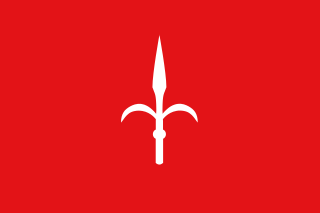
The Free Territory of Trieste was an independent territory in Southern Europe between northern Italy and Yugoslavia, facing the north part of the Adriatic Sea, under direct responsibility of the United Nations Security Council in the aftermath of World War II. For a period of seven years, it acted essentially as a free city.
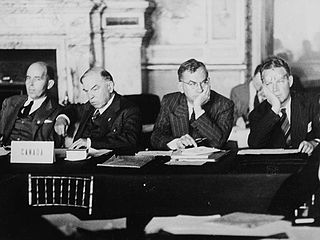
The Paris Peace Treaties were signed on 10 February 1947 following the end of World War II in 1945. The Paris Peace Conference lasted from 29 July until 15 October 1946. The victorious wartime Allied powers negotiated the details of peace treaties with those former Axis powers, namely Italy, Romania, Hungary, Bulgaria, and Finland, which had switched sides and declared war on Germany during WWII. They were allowed to fully resume their responsibilities as sovereign states in international affairs and to qualify for membership in the United Nations.

The provinces of Italy are the second-level administrative divisions of the Italian Republic, on an intermediate level between a municipality and a region. Since 2015, provinces have been classified as "institutional bodies of second level".

The Treaty of Paris between Italy and the Allied Powers was signed on 10 February 1947, formally ending hostilities between both parties. It came into general effect on 15 September 1947.

The Illyrian Provinces were an autonomous province of France during the First French Empire that existed under Napoleonic Rule from 1809 to 1814. The province encompassed modern-day Slovenia, Gorizia, Trieste, and parts of Croatia, Austria, and Montenegro. Its capital was Ljubljana in Slovenia. It encompassed six départements, making it a relatively large portion of territorial France at the time. Parts of Croatia were split up into Civil Croatia and Military Croatia, the former served as a residential space for French immigrants and Croatian inhabitants and the latter as a military base to check the Ottoman Empire.

The Province of Trieste was a province in the autonomous Friuli-Venezia Giulia region of Italy. Its capital was the city of Trieste. It had an area of 212 square kilometres (82 sq mi) and it had a total population of 234,668. It had a coastal length of 48.1 kilometres (29.9 mi).

The Allied Military Government of Occupied Territories was the form of military rule administered by Allied forces during and after World War II within European territories they occupied.

The Julian March, also called Julian Venetia, is an area of southeastern Europe which is currently divided among Croatia, Italy, and Slovenia. The term was coined in 1863 by the Italian linguist Graziadio Isaia Ascoli, a native of the area, to demonstrate that the Austrian Littoral, Veneto, Friuli, and Trentino shared a common Italian linguistic identity. Ascoli emphasized the Augustan partition of Roman Italy at the beginning of the Empire, when Venetia et Histria was Regio X.

The Austrian Littoral was a crown land (Kronland) of the Austrian Empire, established in 1849. It consisted of three regions: the Margraviate of Istria, Gorizia and Gradisca, and the Imperial Free City of Trieste. Throughout history, the region has been contested frequently, with parts of it controlled at various times by the Republic of Venice, Austria-Hungary, Italy, and Yugoslavia among others.

The Princely County of Gorizia and Gradisca, historically sometimes shortened to and spelled "Goritz", was a crown land of the Habsburg dynasty within the Austrian Littoral on the Adriatic Sea, in what is now a multilingual border area of Italy and Slovenia. It was named for its two major urban centers, Gorizia and Gradisca d'Isonzo.

The Morgan Line was the line of demarcation set up after World War II in the region known as Julian March which prior to the war belonged to the Kingdom of Italy. The Morgan Line was the border between two military administrations in the region: the Yugoslav on the east, and that of the Allied Military Government on the west. After 15 September 1947, the Allied Military Government was composed of both the British Element Trieste Forces (BETFOR) troops from the United Kingdom and the Trieste United States Troops (TRUST) from the United States.

Muggia is an Italian town and comune in the south-west of the Province of Trieste, in the region of Friuli-Venezia Giulia on the border with Slovenia. Lying on the eastern flank of the Gulf of Trieste in the northern Adriatic Sea, Muggia is the only Italian port town in Istria. The town's architecture is marked by its Venetian and Austrian history, and its harbour hosts a modern 500-berth marina for yachts.
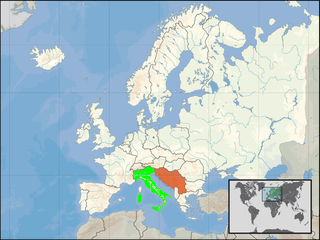
Italy–Yugoslavia relations are the cultural and political relations between Italy and Yugoslavia in the 20th century, since the creation of Yugoslavia in 1918 until its dissolution in 1992. Relations during the interwar years were hostile because of Italian irredentist demands to Yugoslav territory, leading to Fascist Italy and the Axis Powers invading Yugoslavia during World War II. After lingering tensions after the war over the status of the Free Territory of Trieste, relations improved during the Cold War.

Major General Sir (Thomas) John Willoughby Winterton KCB, KCMG, CBE, DL was a British Army officer who was the Military Governor and Commander of the British and US Zone of the Free Territory of Trieste from 1951 to 1954.

The Army command Trieste United States Troops (TRUST) was established 1 May 1947 in accord with a protocol to the Treaty of Peace with Italy which created the Free Territory of Trieste as a new independent, sovereign State under a provisional regime of Government and under the direct responsibility of the United Nations Security Council.
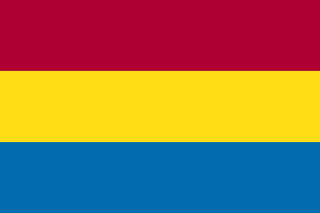
Corpus separatum, a Latin term meaning "separated body", refers to the status of the City of Fiume while given a special legal and political status different from its environment under the rule of the Kingdom of Hungary. Formally known as City of Fiume and its District, it was instituted by Empress Maria Theresa in 1779, determining the semi-autonomous status of Fiume within the Habsburg monarchy until the fall of the Austro-Hungarian Empire in 1918.

Pier Antonio Quarantotti Gambini was an Italian writer and journalist, author of novels, poetry, and essays.
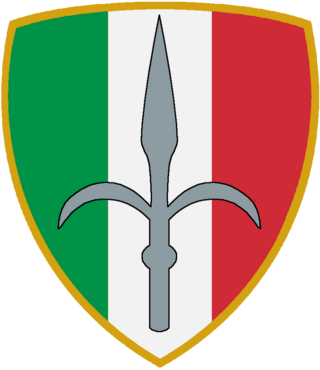
The Trieste Troops Command was an Italian Army brigade-sized command located in the city of the Trieste and tasked with the defense of the city in case of a Yugoslav-Italian war.
Miloš Stamatović (1914–1988) was a Yugoslav military officer who served as Military Governor of Zone B of the Free Territory of Trieste from 1951 to 1954, when the territory was finally split between Italy and Yugoslavia. During World War II, he served as political commissar of the South Herzegovina Partisan Detachment and engaged in prisoner exchange negotiations. In 1952, while military governor of Trieste, he tightened Yugoslav control over Zone B in response to decisions made in London which gave the Italians control over the civil administration of Zone A.



































